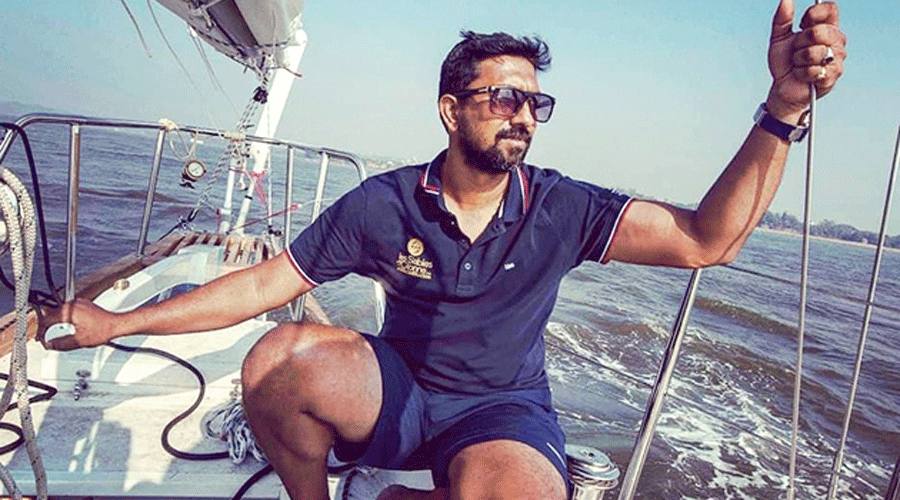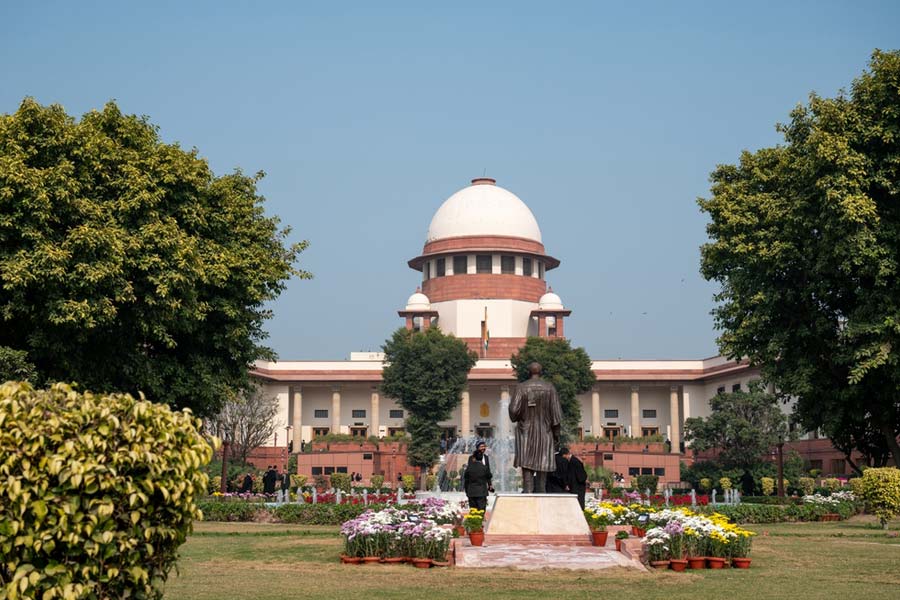It is too early to say anything conclusive about this see-saw contest. Indian sailor Abhilash Tomy is currently in second place and not far from race leader, Kirsten Neuschafer of South Africa.
On the live tracker, as of March 8, 2023, their boats were laterally distant from each other in the south Atlantic (close to the “Horse Latitudes”) with a small margin distinguishing who was ahead in the push north. Kirsten appeared better placed to tap the prevailing weather conditions. Five days earlier, they had shared the same latitude.
It was on February 18 that Abhilash moved past Cape Horn, re-entering the Atlantic more than three months after he had exited that ocean on his voyage east to circumnavigate the planet as part of the 2022 Golden Globe Race (GGR).
The race, which entails a solo, nonstop circumnavigation in a sailboat, had begun on September 4, 2022, from Les Sables-d’Olonne in France. At the time of writing, the race leaders were well past the Falkland Islands and heading north.
Hailing from Kochi, Abhilash’s 2023 passage via Cape Horn was the second time he was doing so. In 2012-2013, the former naval pilot had become the first Indian to essay a solo, nonstop circumnavigation in a sailboat.
On that trip, Cape Horn was reached on January 26, 2013. In 2018, Abhilash was a participant in the second edition of the GGR (the race hadn’t been held after its first edition in 1968). Ahead of the race, he had the ketch, Thuriya, built at Aquarius Shipyard in Goa. The boat was a replica of the Mumbai-built Suhaili, in which Sir Robin Knox Johnston became the first person to do a solo, nonstop circumnavigation in the 1968 GGR.
The 2018 GGR had started from France on July 1 that year. Roughly two-and a-half months later, news broke about the Thuriya being rolled and dismasted in a severe storm in the southern Indian Ocean. The accident left Abhilash badly injured. He was rescued on September 24. On return to India, Abhilash had to undergo surgery followed by rehabilitation. The 2018 GGR was won by the Dutch sailor Jean-Luc Van Den Heede.
The third edition of the GGR was set for September 2022. Abhilash signed up to participate. Wikipedia’s page on him says that he took premature retirement from the navy in 2021 to focus on his preparations.
Abhilash’s participation was officially disclosed in March 2022 at the Dubai Expo. He bought a Rustler 36 in France and named it “Bayanat” after his sponsor. The boat had previously been raced in the 2018 GGR by Philippe Péché (he retired from the race because of a broken wind vane).
In a Facebook post confirming his participation in the 2022 GGR, Abhilash provided a synopsis of the 2018 accident and explained why taking part in the 2022 GGR was “a big thing” for him.
Excerpts: “After 82 days we were lying in third position when the storm overtook us. My boat was dismasted and destroyed, and I suffered a huge fall which left me with multiple spine fractures. And with pretty functionless legs. The remoteness? Couldn’t have been worse. The Antarctic was the nearest continent. We were exactly between Australia and South Africa, and south of India.”
Following rescue, an MRI revealed fractures in the spine. Two days later he was operated upon. Titanium rods were inserted into his spine and five vertebrae were fused into one.
“My legs were so badly off that I had to learn to walk again. But I did learn to walk, and then got into a cockpit and got back to flying, and sailing! Three-and-a-half years later, I am heading back into the same race that almost got me killed. Wish me luck!” he wrote.
The 2022 GGR started from France on September 4. Notwithstanding complaints around information about the weather, in the early part of the race sailor and boat seemed mostly in good shape.
Except for one aspect – there was mental stress. Within the paradigm of solo, nonstop sailing, the participants have checkpoints to hand over film rolls and mail. In early November, at the first such point near Cape Town in South Africa, Abhilash was a picture of frustration. While he had his reasons, some wondered if the stress was because he was headed to the Southern Ocean and the location of his 2018 accident.
Past Cape Town, in the Indian Ocean, the 2022 GGR saw its first major mishap when Finnish sailor Tapio Lehtinen’s boat sank. Rescued by Kirsten Neuschafer, Tapio was later transferred to the cargo ship Darya Gayatri, which took him to Jakarta. Because she had to deviate for the rescue, Neuschafer was awarded time compensation of 35 hours.
The race picked its way south, into the usually stormy waters of the Southern Ocean. Late in December 2022, it was a different Abhilash that spoke to race organisers at the checkpoint at Hobart Gate, Tasmania. He said he was relieved to have crossed the area in the southern Indian Ocean where he had suffered the accident.
“When I crossed that point where I had the accident, I felt light and that was a very physical experience. I felt something leave me,” he said.
At Hobart Gate, Abhilash was in third place. Simon Curwen of the UK, who had taken the lead pretty early in the race, was number one by a considerable margin.
A month later in the Pacific Ocean, Curwen’s boat suffered damage to its wind vane. He was forced to sail towards Chile for repairs. This made Neuschafer the race leader with Abhilash in second place. But problems were brewing for the Indian sailor too.
While in the Indian Ocean, Abhilash suffered a fall on his back. Coupled with long hours of steering in adverse weather, his old injury started acting up. Doctors advised painkillers. Abhilash decided to sail slowly and get some rest. It wasn’t the end of his troubles.
Off the coast of Chile, in the southern Pacific, Neuschafer and Abhilash had to tackle a big storm. Abhilash thereafter revealed a failed wind vane pendulum rudder. Given he had been facing wind vane issues since the Atlantic, he had used up all his spare blades and had ended up cutting the boat’s chart table and toilet door to make wind vane parts.
Eventually, he managed to do the necessary repairs by cutting a blade from the boat’s main emergency rudder. As for Neuschafer, she suffered a broken spinnaker pole and could no longer fly her twin headsails.
Neuschafer was the first around Cape Horn on February 15, 2023. Abhilash followed three days later. In his radio conversation of February 28 (available on the race website), Abhilash said that Bayanat had developed some electrical problems but it was otherwise nice to be in warm weather and the comfort of a dry sleeping bag.
By March 8, his challenges included hand-stitching the mainsail after it ripped. “I have been working quite a lot, non-stop for around 24 hours. I replaced the broken running backstay with a guardrail, and replaced the guardrail with the emergency HF antenna! I spent 3 to 4 hours up the mast and started to work on the mainsail. It was long and tedious but the sail is back on and looking good, better than the boat which is a complete mess,’’ he was quoted as saying in the race update.
Ahead of the race leaders lay the Atlantic’s region of doldrums and the ocean’s north-south span till Les Sables-d’Olonne. Behind them, Michael Guggenberger of Austria has the advantage of a boat still in good shape while Curwen, despite a pause for repairs in Chile and relegated to Chichester Class, has overtaken the Austrian.
● The writer is a freelance journalist based in Mumbai











